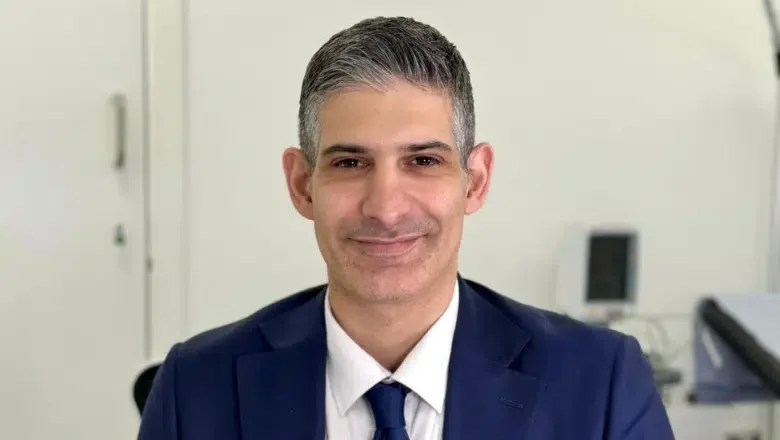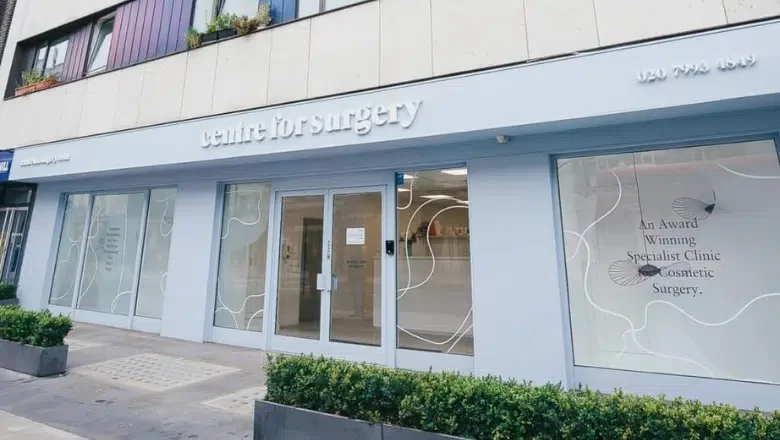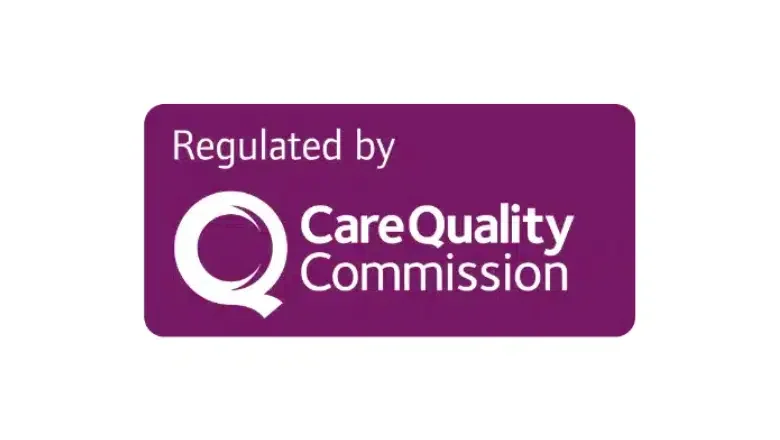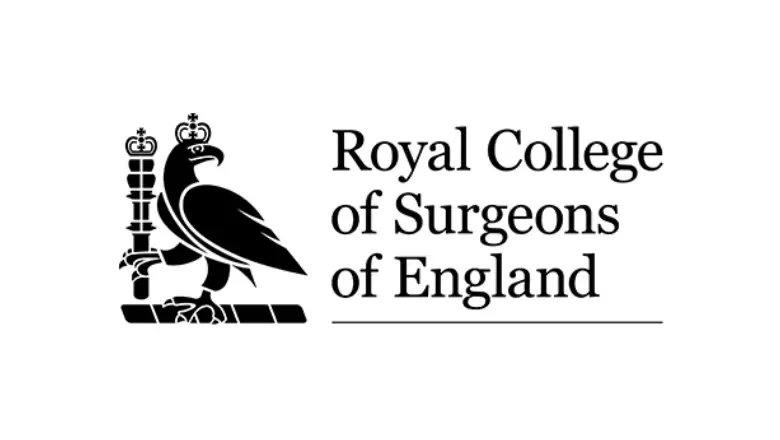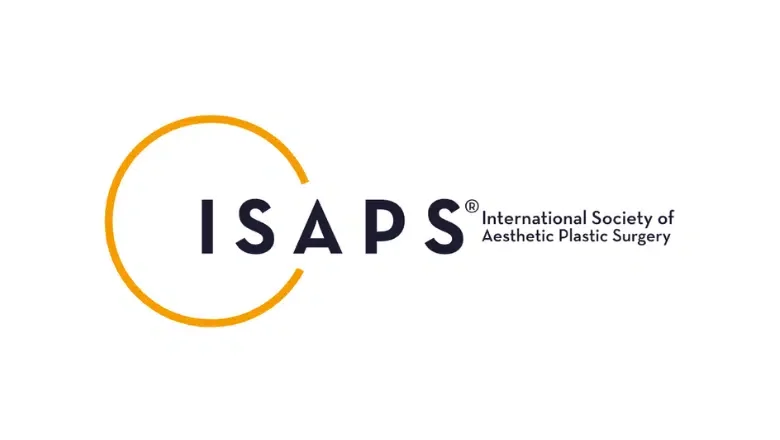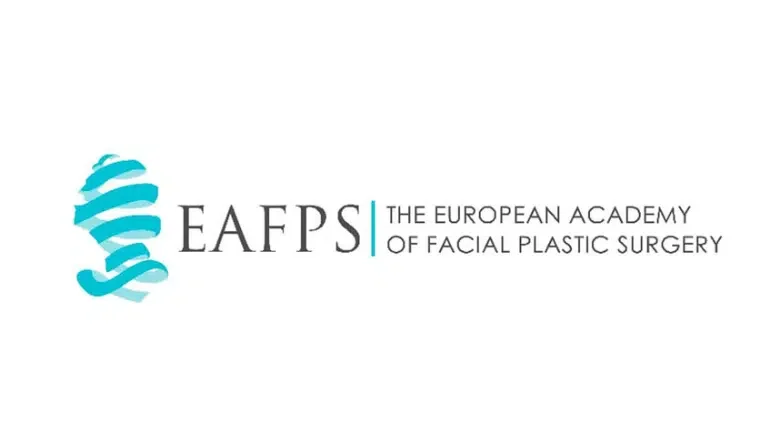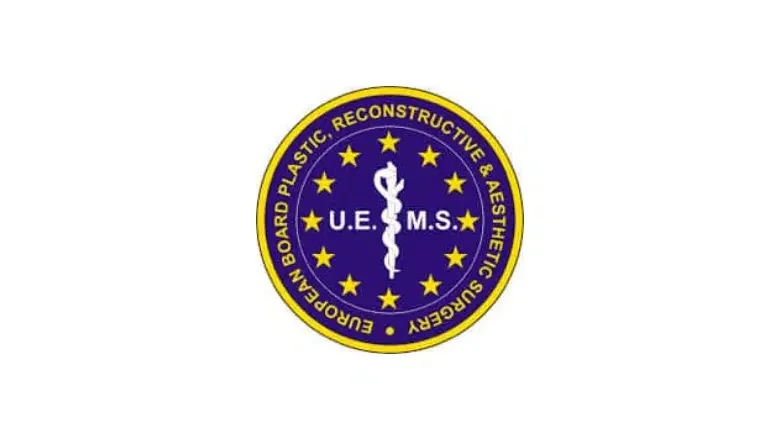Male Pectoral Implants in London
Achieve a more defined, muscular, or aesthetically pleasing chest with pectoral augmentation, a cosmetic surgical procedure that utilises solid silicone implants placed under the pectoral muscles
Pectoral augmentation, also known as pectoral implant surgery, is a specialist body contouring procedure for men. This plastic surgery procedure is designed to enhance the appearance of the chest area by placing solid silicone implants under the pectoral muscles.
Pectoral augmentation is a popular choice among men who desire a more defined, muscular, or aesthetically pleasing chest. The procedure can be an effective solution for men who have been unable to achieve their desired chest appearance through exercise alone, or for those with chest wall deformities such as Poland’s Syndrome or Pectus Excavatum.
At our Baker Street clinic, we specialise in pectoral augmentation and provide expert care to ensure optimal results. Our experienced and certified plastic surgeons work with each patient to tailor the procedure to their individual needs and goals. We offer a range of implant sizes and shapes to ensure the most natural and customised results possible.
Here we will cover everything you need to know about pectoral augmentation, including the procedure itself, recovery, risks and complications, and frequently asked questions. Our aim is to provide you with the information you need to make an informed decision about whether pectoral augmentation is right for you.
Please note that while pectoral augmentation surgery can provide excellent results for the right candidate, it is important to have realistic expectations and understand that it is not a substitute for a healthy lifestyle, diet, and exercise. We encourage you to consult with our team at Centre for Surgery to discuss your individual case and determine the best course of action.
Centre for Surgery offers a range of chest wall implant surgeries, including treatment for pectus excavatum and Poland’s Syndrome.
Why do Men Choose Centre for Surgery for Pectoral Enhancement?
Centre for Surgery in London is a highly regarded clinic specialising in body implant surgery, with particular expertise in chest wall contouring. Pectoral muscle enhancement is a popular procedure among men who may not have the genetic propensity to develop a muscular physique, as well as those with chest wall deformities such as Poland’s Syndrome or Pectus Excavatum.
For men with chest wall deformities, pectoral implants are usually custom-made to camouflage the defect. The process involves creating a plaster mould of the deficiency, known as a moulage, which is then sent off for the manufacture of an implant designed specifically to address the patient’s unique needs. The implants typically take around six weeks to manufacture, after which the surgery can be carried out as a day patient under light general anaesthesia.
This level of customisation and attention to detail ensures a high rate of satisfaction among patients who may have felt self-conscious about their chest appearance from an early age. For many men living in a beach culture where exposing one’s chest is a normal part of socialising, pectoral implant surgery can provide a significant boost in confidence and self-esteem.
At Centre for Surgery, patients can expect to receive expert care from GMC-registered plastic surgeons who specialise in cosmetic procedures. The clinic has a reputation for providing high-quality care and exceptional results, which attracts many patients seeking pectoral augmentation. Patients can also benefit from the clinic’s state-of-the-art facilities, which are designed to provide a safe and comfortable environment for surgical procedures and recovery.
Dr Metin Nizamoglu - Specialist Plastic Surgeon
Dr Metin Nizamoglu is a highly experienced plastic surgeon with particular expertise in pectoral implant surgery. This procedure is designed to enhance the size, shape, and definition of the chest, and Dr Nizamoglu is recognised for his ability to deliver results that look both natural and well-proportioned.
With his background in aesthetic and reconstructive surgery, Dr Nizamoglu combines technical precision with an artistic eye, ensuring that every pectoral implant is positioned to complement the patient’s overall physique. He works closely with each individual during the consultation process to understand their goals and to recommend the most suitable approach, whether that is subtle enhancement or a more defined, athletic chest contour.
His surgical expertise encompasses selecting the appropriate implant type and size, carefully placing it through discreet incisions, and ensuring a seamless recovery process.
What is Pectoral Implant Surgery?
Pectoral implant surgery, also known as pectoral augmentation, is a cosmetic surgical procedure designed to enhance the appearance of the chest area by placing solid silicone implants under the pectoral muscles. This procedure is typically sought by men who desire a more defined, muscular, or aesthetically pleasing chest but have been unable to achieve their desired results through exercise alone.
During the procedure, the surgeon will make an incision in the armpit to create a pocket under the pectoral muscle. The silicone implant is then inserted into the pocket, creating a more prominent, defined, and muscular appearance to the chest area. Pectoral implants come in various shapes and sizes, and the surgeon will work with the patient to choose the most appropriate implant to achieve the desired results.
Pectoral implant surgery is typically performed under general anesthesia and can take several hours to complete. Patients may experience some discomfort, swelling, and bruising in the days following the procedure, which can be managed with pain medications and cold compresses. A compression garment may also be recommended to help reduce swelling and promote healing.
Pectoral implant surgery is a highly customisable procedure that can provide long-lasting, permanent results. However, as with any surgical procedure, it comes with potential risks and complications that should be discussed with a qualified and experienced plastic surgeon before proceeding. It is crucial to have realistic expectations about the outcome of the surgery and understand that it is not a substitute for a healthy lifestyle, diet, and exercise.
Benefits of Pectoral Augmentation
Pectoral augmentation is a popular cosmetic procedure that offers numerous benefits to individuals seeking to improve the appearance of their chest area. Here is a detailed explanation of the benefits associated with pectoral implant surgery:
Enhanced Chest Appearance
One of the primary benefits of pectoral augmentation is the enhancement of the chest’s size, shape, and overall appearance. The procedure can create a more muscular, well-defined, and aesthetically pleasing chest, which may improve an individual’s self-esteem and confidence.
Customised Results
Pectoral implants come in various shapes and sizes, allowing patients and their surgeons to choose the most appropriate implant to achieve their desired outcome. This level of customisation ensures that the results are tailored to each patient’s specific goals and body type.
Symmetry and Proportion
Pectoral augmentation can address chest asymmetry or imbalance caused by genetics, injury, or muscle loss. By restoring symmetry and proportion, the surgery can create a more balanced, harmonious appearance across the entire upper body.
Permanent Results
Unlike some other cosmetic procedures, such as injectable fillers or fat transfer, pectoral implants offer permanent results. Solid silicone implants maintain their shape and size over time, providing long-lasting enhancement to the chest area.
Minimal Scarring
Pectoral implant surgery typically involves an incision in the armpit, which results in minimal visible scarring. This discrete approach ensures that the final outcome appears natural and is not marred by conspicuous surgical scars.
Improved Clothing Fit
With a more defined and muscular chest, patients may find that their clothing fits better and is more flattering. This can lead to increased confidence in social and professional settings.
Psychological Benefits
For many individuals, achieving a more muscular and defined chest can lead to improved self-esteem and body image. This psychological benefit can have a positive impact on various aspects of life, including relationships, career, and overall well-being.
Am I suitable for Pec Implants?
While the surgery can provide excellent results for many patients, it is not suitable for everyone. Here are some factors that may make someone a suitable candidate for pectoral implant surgery:
Good General Health
Pectoral implant surgery is a major surgical procedure that requires general anaesthesia. Patients should be in good overall health and free from any underlying medical conditions that may increase the risk of complications during or after the surgery.
Stable Weight
Pectoral implants can enhance the size and shape of the chest area, but they cannot address excessive fat or skin. Therefore, it is recommended that candidates for pectoral implant surgery maintain a stable weight and be within a healthy BMI range to achieve optimal results.
Fitness and Exercise
While pectoral implants can create the appearance of a more muscular chest, they cannot replace the benefits of a healthy diet and regular exercise. Candidates should have a foundation of good fitness habits and understand that pectoral implants are not a substitute for healthy lifestyle choices.
Realistic Expectations
Pectoral implant surgery can provide excellent results, but it is crucial that candidates have realistic expectations about what the procedure can achieve. During the consultation, the surgeon will discuss the potential outcomes of the surgery and help the patient set realistic goals.
Chest Muscle Deficiency
Candidates with underdeveloped or weak chest muscles due to genetics, injury, or congenital issues may benefit from pectoral implants. The surgery can provide a more defined and aesthetically pleasing chest appearance.
Non-smokers
Smoking can significantly increase the risk of complications during and after surgery. Candidates should refrain from smoking for several weeks before and after the surgery to ensure optimal healing and minimise the risk of complications.
Mental and Emotional Stability
As with any cosmetic surgery, candidates for pectoral implants should have a stable mental and emotional state and understand the potential risks and benefits of the procedure. They should have a clear understanding of their motivations for seeking the surgery and be prepared for the recovery process.
Pectoral implants procedure
Pectoral implant surgery, also known as pectoral augmentation, is a cosmetic surgical procedure designed to enhance the appearance of the chest area by placing solid silicone implants under the pectoral muscles. Here is an in-depth description of the surgical procedure:
Anaesthesia
Pectoral implant surgery is typically performed under general anaesthesia to ensure patient comfort and safety during the procedure.
Incision
The surgeon will make an incision in the armpit (axillary region) to minimise visible scarring. This incision is usually about 4 cm in length and is placed in the natural skin crease.
Pocket Creation
Once the incision is made, the surgeon will create a pocket under the pectoral muscle using a blunt dissection technique. The size and position of the pocket will be tailored to the patient’s desired implant size and shape.
Implant Placement
The silicone implant is then inserted into the pocket beneath the pectoral muscle. The implant is carefully positioned to ensure a natural look and feel while minimizing the risk of complications. The size and shape of the implant can be adjusted during the surgery to achieve the desired outcome.
Closure
Once the implant is in the desired position, the incision is closed using sutures or surgical glue. A drain may be placed to remove any excess fluid or blood that may accumulate in the surgical site.
Dressing and Recovery
A compression garment or dressing will be applied to the chest area to help reduce swelling and promote healing. Patients will be monitored in the dedicated recovery room before being discharged from our Baker Street clinic.
The entire procedure typically takes two to three hours to complete. In the days following the procedure, patients may experience some discomfort, swelling, and bruising, which can be managed with pain medications and cold compresses. Patients are advised to avoid heavy lifting and strenuous exercise for several weeks after the surgery to allow for proper healing.
Recovery after Pectoral Implant Surgery - what to expect
Recovery after pectoral implant surgery, also known as pectoral augmentation, is an important part of the healing process. Here is a detailed overview of what patients can expect during their recovery:
Immediately After Surgery
Patients will be monitored in a recovery room for a few hours after the surgery before being discharged from our clinic. They may experience some discomfort, swelling, and bruising in the chest area, which can be managed with pain medications and cold compresses.
Compression Garment
A compression garment or dressing will be applied to the chest area to help reduce swelling and promote healing. Patients should wear the garment as directed by their surgeon to ensure optimal healing.
Activity Restrictions
Patients should avoid heavy lifting, strenuous exercise, and any activities that could strain the chest muscles for several weeks after the surgery. Light walking is encouraged to help promote circulation and prevent blood clots.
Follow-up Appointments
Patients will need to schedule follow-up appointments with their surgeon to monitor their healing progress and remove any drains or stitches as needed.
Return to Work
Most patients can return to work within one to two weeks of the surgery, depending on their job requirements and the extent of the procedure.
Long-Term Recovery
Full recovery after pectoral implant surgery can take several months. Patients should avoid strenuous exercise and heavy lifting for at least six weeks after the surgery to allow the chest muscles and implants to heal properly. The final results of the surgery may take several months to fully manifest.
Scarring
While the incision for pectoral implant surgery is typically made in the armpit and is therefore discreet, patients should expect some scarring. The scar will typically fade over time and can be minimised with proper wound care.
The Centre for Surgery approach to aftercare
Our aftercare programme was recently described as ‘outstanding’ by our regulator, the Care Quality Commission.
Our postoperative support team phones all our patients the day after their breast implant procedure. The proactive nature of our postoperative support gives every patient the best opportunity for a smooth postoperative recovery free of complications. In many cases, if complications were to occur, their impact would be markedly lessened by early detection, prompt clinical assessment and correct treatment. When a patient expresses concern to our team over the phone, we often call patients on the same day for evaluation with one of our expert nursing teams. Even if there is no significant issue, the careful explanation and calm reassurance provided by our team can help to alleviate any worries you may have experienced.
Risks and complications of pectoral implant surgery
As with any surgical procedure, pectoral implant surgery comes with potential risks and complications that patients should be aware of before proceeding with the surgery. Here are some of the specific risks and complications of pectoral implant surgery:
Infection
Infection is a potential risk after any surgery, including pectoral implant surgery. Patients are given antibiotics to reduce the risk of infection, and they must also follow proper wound care instructions to minimise the risk of infection.
Haematoma
Haematoma is a collection of blood that can occur under the skin after surgery. This can cause pain, swelling, and bruising. If a hematoma occurs, it may need to be drained surgically.
Implant Displacement
Implant displacement occurs when the implant shifts from its original position, causing an asymmetrical appearance. This can be corrected through revision surgery, where the implant is repositioned or replaced as needed.
Seroma
Seroma is a collection of fluid that can occur under the skin after surgery. This can cause swelling and discomfort. If a seroma occurs, it may need to be drained surgically.
Nerve Damage
Nerve damage is a potential risk with any surgery, including pectoral implant surgery. This can cause numbness or a loss of sensation in the chest area. Most cases of nerve damage are temporary, but in some cases, it can be permanent.
Capsular Contracture
Capsular contracture occurs when scar tissue forms around the implant, causing it to harden and deform. This can cause pain and discomfort, and the implant may need to be replaced surgically.
Scarring:
While the incision for pectoral implant surgery is typically made in the armpit and is, therefore, discreet, patients should expect some scarring. Scar formation can be minimised by following proper wound care instructions and avoiding smoking, which can delay healing.
Pectoral Implant Surgery at Centre for Surgery
At Centre for Surgery, we have a wealth of experience in all types of chest implant procedures, including single implants, custom-made implants, and fat transfer techniques. Our surgical facilities are owned and managed by us, ensuring that we maintain the highest standards of care and safety for our patients. We believe that properly performed pectoral implant surgery takes time and should not be rushed, which is why our surgeons perform a maximum of one procedure per day. Unlike other providers who cram multiple procedures into a single day, we prioritize our surgeons’ mental and physical sharpness to achieve the best results.
Our surgeons live and work in London, and we do not work with ‘fly-in, fly-out’ surgeons. This is crucial because complications can occur, and our surgeons are readily available to manage any issues that may arise. Pectoral implant surgery is not risk-free, and our expert nursing team monitors patients closely under the supervision of the surgeon to ensure proper healing and to minimize the risk of complications.
We offer a comprehensive treatment package that includes as many preoperative consultations with the surgeon as necessary to ensure that pectoral implants are the right choice for the patient. Our specialist day surgery facility is recently rated ‘Good’ by the Care Quality Commission, ensuring top-quality care and safety for our patients. We also offer enhanced same-day discharge with the added benefit of recovering at home thanks to TIVA anaesthesia. Our patients receive 24/7 clinical support from their surgeon for the first 48 hours and our expert postoperative support team. Additionally, patients are assigned a dedicated patient coordinator who serves as their point of contact throughout all stages of the patient journey. We also conduct in-depth preoperative medical assessments to ensure that patients are fully fit for the procedure.
Our standards of postoperative care are exceptionally high and have been described as ‘outstanding’ by the CQC. We offer regular telephone and face-to-face checks to ensure that our patients have a smooth recovery and optimal results. Centre for Surgery also offers finance options in conjunction with our finance partner, Chrysalis Finance, to help make the procedure accessible to more patients.
FAQs
-
What are pectoral implants?Male pectoral implants are often considered a necessity for men whose chest appearance has changed due to ageing or weight changes. These factors can cause the appearance of the chest to alter and to appear saggy. In some cases, men find it difficult to gain muscle by working out and having an improved diet. Men may even have underdeveloped muscles due to birth defects or injuries. In these instances, male pectoral implants may be the best solution.
Pectoral implants for men differ significantly from breast implants for women. Pectoral implants are designed to simulate the look and feel of the pectoralis muscle instead of soft connective tissue for female breast implants. Polytech is a German company that has an excellent reputation and safety record for making the highest quality body contouring implants. -
Am I an ideal candidate for male pectoral implants?A good candidate must have good overall health and realistic expectations of the results they can achieve. You could:
1. Have an undeveloped chest and are unable to achieve a larger or more defined chest with diet and exercise alone.
2. Have a sunken chest (pectus deformity)
3. Have an absent pectoral muscle (Poland’s Syndrome) -
What does male pectoral augmentation involve?Here is an overview of what male pectoral augmentation involves:
Anaesthesia: The patient is placed under general anaesthesia to ensure their comfort and safety throughout the procedure.
Incision: The surgeon will make an incision in the natural fold of the armpit, which allows for the implant to be inserted and positioned under the pectoral muscle. This incision location helps to conceal any scarring and reduces the risk of nerve damage.
Implant Placement: The silicone implant is inserted into a pocket created under the pectoral muscle. The size and shape of the implant can be adjusted during the surgery to achieve the desired outcome.
Closure: Once the implant is in place, the surgeon will close the incision with sutures and dressings. -
How long does pectoral enhancement surgery take?The length of time it takes to perform pectoral enhancement surgery, also known as pectoral implant surgery, depends on several factors, including the extent of the procedure, the surgeon's experience, and the patient's individual needs and goals.
On average, pectoral enhancement surgery takes around one to two hours to complete. However, this time can vary depending on the specific details of the procedure. For example, if the patient requires custom-made implants, the surgery may take longer as the surgeon needs to wait for the implants to be manufactured before proceeding. -
What is the recovery period like after having pec implants?After the procedure, there will be some discomfort because of the muscle dissection and you can take pain medication to ease it. You should limit your physical activity for the first week to ensure speedy recovery. It may take up to six weeks for the area where the pectoral implants were placed to heal completely.
-
Will I have to wear a compression garment after pec implant surgery?A compression garment is applied to provide comfort and reduce swelling, which you will have to wear for the first 3-4 weeks to stabilise the position of the implants during the early stage of the healing process.
-
Where are pec implant scars located?The incisions for pectoral implant surgery, also known as pectoral augmentation, are typically made in the armpit, which means that the scars are usually well-hidden and discreet. The surgeon will make a small incision in the natural fold of the armpit, which allows for the implant to be inserted and positioned under the pectoral muscle.
Placing the incision in the armpit has several advantages. First, it allows the surgeon to insert the implant without creating any visible scars on the chest itself. Second, it reduces the risk of nerve damage, which is a potential complication when incisions are made directly on the chest.
After the surgery, patients may experience some scarring, but the scars are typically small and well-hidden within the natural folds of the armpit. Patients can help minimise scarring by following proper wound care instructions and avoiding smoking, which can delay healing.
It is important to note that while pectoral implant scars are typically discreet and well-hidden, there is always the potential for scarring with any surgical procedure. Patients should discuss the potential risks and benefits of the procedure with a qualified and experienced plastic surgeon at Centre for Surgery before proceeding. -
What are the risks associated with male pectoral implants?The most common risks include bleeding, infection and implant malposition. Other possible complications will be discussed during your consultation.
-
What happens if I am unhappy with the results of pectoral implant surgery?It is ideally recommended not to have any further work done for 12-18 months so that favorable outcome can be achieved after a revision surgery. However, the waiting period between your first and revision surgery can be carefully decided by you and your surgeon by looking at the result that was achieved and your expectation.
-
What are the surgical alternatives to pectoral implants?There are several surgical alternatives to pectoral implants that can be considered depending on the patient's individual needs and goals. Here are some of the most common surgical alternatives:
Fat Transfer: Fat transfer, also known as lipofilling or fat grafting, involves using the patient's own body fat to enhance the appearance of the chest area. During the procedure, fat is removed from one part of the body, such as the abdomen or thighs, and transferred to the chest area to create a more defined, muscular appearance. This procedure is less invasive than pectoral implants and can provide a more natural-looking result.
Chest Contouring Surgery: Chest contouring surgery involves reshaping the chest area by removing excess tissue or skin. This procedure can be effective for men with gynecomastia, a condition where the male breast tissue becomes enlarged. Chest contouring surgery can help create a more masculine chest contour and improve self-confidence.
Breast Reduction Surgery: Breast reduction surgery involves removing excess breast tissue in men with gynecomastia. This procedure can help reduce the size of the breasts and create a more masculine chest appearance.
What To Expect
The consultation for pectoral implants
During your consultation with the surgeon at Centre for Surgery in London, the initial step involves taking a number of measurements to determine the correct size of the pectoral implant. This includes assessing the chest dimensions, nipple-areola position, and soft tissue quality. Using this information, the surgeon will determine the appropriate size of the implant that will achieve the desired results.
The surgeon will also provide information on the location of the incision, which is typically located on the side of the chest and measures no more than 6 cm in length on average. This location is carefully chosen to minimize scarring and ensure a natural-looking result.
In addition to taking measurements and discussing incision location, high-resolution photos will be taken of the chest area, and computer digital imaging may also be used to provide a visual representation of what the final results may look like. The surgeon will also take a full medical history, including any previous operations, current medications, and potential allergies, to ensure that the patient is a suitable candidate for the pectoral implants procedure.
If the patient is deemed a suitable candidate, it is recommended that they take a period of time to reflect on all the information provided. At Centre for Surgery, we always recommend a minimum of a 2-week "cool-off" period to ensure that the patient has had time to weigh their options and make an informed decision.
Prospective patients are also welcome to have as many follow-up consultations as needed to ensure that they are fully informed and empowered to make the best decision for their needs and goals. The surgeon will discuss the potential risks and complications of pectoral implant surgery and provide information on what patients can expect during the postoperative period.
At Centre for Surgery, we strive to provide our patients with the highest level of care and support throughout their journey. We are committed to helping our patients achieve their desired results while minimising the risks and potential complications associated with the procedure.
Before your procedure
Preparing for pectoral implant surgery is an important part of ensuring a successful outcome. Once a patient has decided that pectoral implants are the right choice for them, the Centre for Surgery preoperative assessment team will be in contact to help prepare them for the surgery.
Here are some of the recommended actions that patients should take before the surgery:
Stop smoking: It is highly recommended to stop smoking for at least six weeks before the surgery. Active smoking is associated with a number of risks, including delayed wound healing, which could result in wound infection and a possible need to have the implants removed.
Avoid aspirin: Patients should also avoid aspirin and all medicines containing aspirin for at least one week prior to the procedure. This is because aspirin can increase the risk of bleeding during and after the surgery.
Follow dietary restrictions: For six hours before the chest implant procedure, patients should refrain from eating any food or any type of drink apart from sips of clear fluid (water and tea/coffee without added milk), which is allowed for up to two hours before the procedure. This is important to reduce the risk of complications during the surgery, such as nausea or vomiting.
Arrange transportation: Patients should arrange for transportation to and from the surgical center on the day of the procedure, as they will not be able to drive themselves home after the surgery.
Plan for recovery: Patients should also plan for their recovery period, which may involve taking time off work or arranging for help with daily activities. They should also follow the surgeon's post-operative instructions carefully to ensure a smooth and successful recovery.
By following these recommended actions, patients can help ensure the best possible outcome for their pectoral implant surgery. At Centre for Surgery, we are committed to providing our patients with comprehensive care and support throughout their journey, from preoperative preparation to post-operative recovery.
On the day of your procedure
At Centre for Surgery, we prioritize the safety and comfort of our patients throughout the pectoral implant procedure. On the day of the surgery, patients are asked to arrive at the booked time to avoid any delays. A member of our nursing team will then formally admit the patient for the procedure and carry out a number of tasks, including checking vital signs and getting the patient changed into clinic wear.
After these initial tasks are completed, the anaesthetist will assess the patient to ensure that they are fit for anaesthetic. They will also prescribe premedications to optimize the patient's recovery after the procedure. The surgeon will then see the patient to confirm the exact procedure to be undertaken and the patient will sign the informed consent form. Skin marking and photos may also be taken at this point.
The pectoral implant procedure for men is a commonly performed procedure at Centre for Surgery and is carried out under TIVA general anaesthesia. The procedure takes approximately 90 minutes to complete. The incision is most commonly placed on the side of the chest to ensure a discreet scar. A pocket for the pectoral implants is then created using a specialized dissector instrument. The pectoral implants are then inserted using an implant funnel 'no touch' technique under the muscle or over the muscle depending on soft tissue coverage. The small incisions are typically between 5-6cm in length but may be longer depending on the size of the implant chosen. The skin is then closed using dissolvable sutures, so there is no need to have them removed at a separate appointment. Surgical drains may be inserted during the procedure to minimize the collection of blood around the implants.
After the surgery, patients are closely monitored by our nurses for 1-3 hours to ensure a full recovery. Once assessed as fit for discharge, patients require a responsible adult escort to take them home in a car or taxi and to look after them for at least the first 24 hours after the surgery.
At Centre for Surgery, we are committed to providing the highest level of care and support to our patients throughout their journey. We ensure that our patients are fully informed and empowered to make the best decisions for their needs and goals.
After your procedure
At Centre for Surgery, we provide comprehensive post-operative care and support to our patients who have undergone pectoral implant surgery. Our dedicated post-operative support team is available round the clock to answer any questions or concerns that the patient may have. We also call our patients regularly for the first two weeks after the procedure to ensure that their pain levels are well-controlled and that their healing is progressing as normal.
After the surgery, patients can expect some discomfort which usually settles down within 3-4 days. Most of our patients are very comfortable by the end of the first week. However, the doctor may recommend a period of approximately one week off work to ensure optimal recovery. Patients should also minimize any excessive movements of their arms for the first 2 weeks after surgery to minimize movement of the implants.
In addition, patients will be required to wear a well-supporting compression garment for a full 6 weeks to ensure that the healing is optimal and that the scars heal with the best results possible. Upper body exercise should be avoided for a full 6 weeks to avoid any potential pectoral implant rotation.
Patients will attend a postoperative check-up with one of our nursing team at 7-10 days to review their surgical wound sites and ensure proper healing is taking place. Recommendations on treatments for scar healing may be given for optimal scar cosmesis. At 6 weeks, patients will see their surgeon for a comprehensive review to ensure that their results are in line with their expectations.
At Centre for Surgery, we pride ourselves on providing the highest level of care and support to our patients throughout their journey, from initial consultation to post-operative care. We are committed to ensuring that our patients are fully informed and empowered to make the best decisions for their needs and goals.


